IF they change their target from San Francisco to another, just realize they plan to launch not more than 30 to 50 miles off the mainland of the U.S. or Japan with a submarine launch of an ICBM. So, there will be no time to prepare or even to stop this missile. Will it work? That's hard to say but whether it does or not a nuclear missile might go off off of Japan or the U.S. within 30 to 50 miles of their mainlands which could be as bad or worse as it hitting any city in the long run.
The other targets instead could be: Los Angeles, San Diego, Portland Oregon, Seattle Washington, Honolulu or Tokyo Japan. They will not strike Seoul simply because they are relatives separated by two governments so think about this in the same way East Germany would never have directly attacked West Germany before they reunified after the Berlin Wall fell.
Later note: Is it possible they could launch 10 to 20 of these things? Yes.
If so I would expect all the above cities to be hit with one or more missiles that are submarine launched. Because likely this couldn't be stopped once they were launched by anything we have presently except maybe by lasers or electron partical beam generators or something like this. I added information about lasers and Electron particle beam generators that normally operate from space. In the past, a beam is sent generated by a small nuclear weapon and directed from space to earth. This was what it was originally designed to do. Is it still operational? I don't know presently.
Could China help North Korea do this? This is possible but remember that the U.S., China and Russia and possibly Israel, France, Germany and Pakistan and India in addition to the U.S. and others all likely have Doomsday devices which are set to kill ALL life on earth. So, this is something to think about too. These were designed to prevent other nations from launching a pre-emptive nuclear attack but North Korea's point of view is they have nothing to lose (the governments thinking) which is very crazy from our point of view but not from a North Korean leaders point of view for some reason. Does Kim Jong Un have a death wish? I think the answer to this has to be : "Yes!" at this point in his actions.
So, if Kim Jong Un's Submarine's launch their ICBMS it is fair to say that all life on earth might be gone (dead) within 1 weeks time through a horrific but natural chain of events at this point.
begin quote from:
US detects 'highly unusual' North Korean submarine activity ...
www.cnn.com/2017/07/31/politics/north-korea...test-submarine-activity/index.html
2 hours ago - Washington (CNN) The US military has detected "highly unusual and unprecedented levels" of North Korean submarine activity and evidence ...
US detects North Korea committing 'highly unusual' submarine activity ...
www.washingtonexaminer.com/us-detects-north-korea...highly-unusual-submarine-ac...
4 hours ago - The U.S. military has detected "highly unusual" North Korean submarine activity, just days after the rogue nation conducted its second test of an ...
U.S. Detects 'Highly Unusual' North Korean Submarine Activity | FOX40
fox40.com/2017/07/31/u-s-detects-highly-unusual-north-korean-submarine-activity/
5 hours ago - WASHINGTON -- The US military has detected "highly unusual and unprecedented levels" of North Korean submarine activity and evidence of ...
'Highly unusual' North Korean submarine activity detected, says US ...
www.channelnewsasia.com/.../highly-unusual-north-korean-submarine-activity-detect...
US detects 'highly unusual' North Korean submarine activity
Story highlights
- An ejection test examines a missile's "cold-launch system," which uses high pressure steam to propel a missile out of the launch canister
- Carried out on land Sunday at Sinpo Naval Shipyard, this is the third such test this month
Washington (CNN)The
US military has detected "highly unusual and unprecedented levels" of
North Korean submarine activity and evidence of an "ejection test" in
the days following Pyongyang's second intercontinental ballistic missile
launch this month, a defense official told CNN on Monday.
An
ejection test examines a missile's "cold-launch system," which uses
high pressure steam to propel a missile out of the launch canister into
the air before its engines ignite. That helps prevent flames and heat
from the engine from damaging either the submarine, submersible barge
or any nearby equipment used to launch the missile.
Carried
out on land at Sinpo Naval Shipyard, Sunday's ejection test is the
third time this month -- and fourth this year -- that North Korea has
conducted a trial of the missile component that is critical to
developing submarine launch capabilities, according to the US defense
official.
North Korea latest
- North Korea fired a second long-range, intercontinental ballistic missile on Friday
- Experts believe if the projectile had been fired on a standard trajectory, it could have threatened cities on US mainland
- US President Donald Trump said Saturday that China, North Korea's most important ally, isn't doing enough to rein in its neighbor.
- The US said Sunday it flew stealth bombers over North Korea in response to the test
- Top US official says "time for talk is over"
Coupled
with reports of increased submarine activity, news of another ejection
test comes amid concerns over North Korea's launch of an
intercontinental ballistic missile that appears to have the range to hit
major US cities on Friday.
Experts
believe if Friday's test had been fired on a flatter, standard
trajectory, it could have threatened cities like Los Angeles, Denver and
Chicago.
President Donald Trump
told reporters at his second full Cabinet meeting that his
administration will be able to take care of North Korea but offered no
specifics about what he plans to do.
"We
will handle North Korea. We are gonna be able to handle them. It will
be handled. We handle everything," Trump said after a reporter asked him
about his strategy.
Asked if the
US would strike first, Trump's press secretary, Sarah Huckabee Sanders
said Monday that "all options are on the table," adding that Trump would
not "broadcast" his decisions.
Democrat
Sen. Mark Warner said on "Erin Burnett Out Front" Monday that Trump
showed "enormous naiveté" by suggesting the nuclear threat from North
Korea could be handled so simply.
Jan 13, 2015 - Tesla attempts to gain funding to build his particle beam weapon from the US ... the high voltage generator he envisions to power it, which is essentially a highly ... electrons are injected into the beam, forming a neutral beam.
Particle-beam weapon - Wikipedia
https://en.wikipedia.org/wiki/Particle-beam_weapon
Jump to Beam generation - Charged particle beams diverge rapidly due to mutual ... weapon ionizes atoms by either stripping an electron off of each atom, ...
Patent US9443634 - Atmospheric electron particle beam generator ...
https://www.google.ch/patents/US9443634
Provided is an atmospheric electron particle beam nozzle, with a nozzle body having a lumen disposed therethrough; an electrode that is disposed within the ...
Patent US20100043729 - Atmospheric electron particle beam ...
www.google.com/patents/US20100043729
Feb 25, 2010 - Provided is an atmospheric electron particle beam nozzle, with a ... wherein said transformer receives RF input from said RF generator at a first ...Is Tesla's particle beam weapon practical? | Dan Elton
www.moreisdifferent.com/2015/01/13/is-teslas-particle-beam-weapon-practical/
begin quote from:
The US Military Will Usher in a Widespread Use of Laser Weapons in ...
bigthink.com/.../the-us-military-plans-to-usher-in-widespread-use-of-laser-weapons-b...
Mar 21, 2017 - This was made evident when Lockheed Martin and the US Army recently announced, a successful test of a 60-kilowatt (kW) laser. This one was ...
US military could be using powerful LASER weapons by 2020 | Daily ...
www.dailymail.co.uk/sciencetech/article.../Laser-weapons-edge-use-US-military.html
Apr 8, 2017 - While laser weapons have been a staple in science fiction films for decades, the US military is inching closer to making these a reality.Laser weapons edge toward use in US military - Phys.org
https://phys.org › Technology › Engineering
Apr 8, 2017 - A sci-fi staple for decades, laser weapons are finally becoming reality in the US military, albeit with capabilities a little less dramatic than at the movies.
The U.S. Military Wants Lasers to Shoot Down North Korean ICBMs ...
nationalinterest.org/.../the-us-military-wants-lasers-shoot-down-north-korean-icbms-2...
The US Military Will Usher in a Widespread Use of Laser Weapons in the 2020s
Laser aboard the USS Ponce. Getty Images.
Lasers have been a mainstay of sci-fi battles for decades.
But making them practical for the battlefield has proven difficult. Now,
private contractors and government agencies have developed weapons
systems that are making science fiction a reality. This was made evident
when Lockheed Martin and the US Army recently announced, a successful test of a 60-kilowatt (kW) laser. This one was twice as powerful as one they assessed in 2015.
The basic design was first introduced via the Department of Defense's (DoD) Robust Electric Laser Initiative Program, launched in 2010. Most laser weapons would require a large power supply. In this way, they’re stuck being mounted at a permanent base, which isn’t so useful. Over time, laser technology has grown small enough, yet powerful enough to serve military purposes. They have incredible advantages, including not having to store or deploy expensive ordinance, and a near unlimited firing capacity.
This isn’t the first foray into military-focused lasers. Lockheed’s ATHENA 30-kW fiber laser, in 2015, was shown to destroy a truck one mile away, burning through its manifold in just a few seconds. This replicated a Pentagon test from 2009. The image Lockheed used when it made its announcement portrayed the laser mounted on one of the Army’s Heavy Expanded Mobility Tactical Trucks (HEMTT). This is an armored truck meant to haul heavy artillery.
The weapon itself is a combined fiber laser, which means it doesn’t actually fire one but two lasers condensed into one beam, making it stronger. It uses fiber optics bundled together where each contributes energy to the beam, making the process scalable. The particular laser tested however was “diffraction-limited,” meaning it was close to the place where the beam could no longer be concentrated on a fixed point.

Most military lasers today are too big and need too much power. New designs are blowing these models away. Getty Images.
The beam is actually invisible and as with most lasers, silent. Not only that, it’s proved extremely accurate and efficient. 43% of the overall power goes to the laser, allowing the rest to go to the truck. Robert Afzal is a senior fellow for laser and sensor systems at Lockheed Martin. He told The Washington Post, “We’re really at the dawn of an era of the utility of laser weapons.”
The system will soon be delivered to the Space and Missile Defense Command/Army Forces Strategic Command (USASMDC/ARSTRAT), in Huntsville, Alabama, where it will undergo further testing. Initially, the system reached 58 kW, a record. But Lockheed officials assured it will produce a 60 kW beam by the time it’s ready, sometime in the next few months.
SMDC spokesman John Cummings said, "Our ultimate goal is to have a 100kW laser on a vehicle." He added, "We have to take baby steps to get there." Besides trucks, such lasers could be mounted on planes, helicopters, and ships.
These days, security and military officials fear a swarm of weaponized drones. This laser may be the perfect way to neutralize them. A recent incident made headlines when a $3 million Patriot missile, as part of a missile defense system, shot down a drone worth a few hundred dollars. Such a laser, costing maybe a dollar a shot or less, would offer a precise, versatile, and cost-effective alternative. Not only can it take out a swarm of deadly drones, it can act as a missile defense system, and even protect against an overwhelming number of mortars, rockets, or artillery shells.

Stryker assault vehicle. Getty Images.
This isn’t the only laser weapon in the DoD’s sights, far from it. At the end of February, beginning of March, USASMDC/ARSTRAT tested a 5-kW laser, mounted on a Stryker assault vehicle, at the White Sands Missile Range in New Mexico. The Stryker was equipped with a Mobile Expeditionary High Energy Laser (MEHEL) 2.0., allowing it obliterate militarized drones.
It was tested for five days. The laser effectively took out 20 lb. quadcopter drones, in groups and singularly, each moving at about 115 mph (185 km/h), and at an altitude of 1,200 ft. (366 m). SMDC’s Adam Aberle, who worked on this project said, “We were able to verify and show that we could put a radar and a laser on a platform so it could self-cue to targets and that was very successful.” The Army previously announced that it plans to begin deploying laser weapons in 2023.
The US Navy’s USS Ponce already carries a formidable laser. This can take out light aircraft, drones, and even small boats. It does so by heating elements, causing ordinance to explode, or by blinding sensors. The Navy is also planning on imbuing helicopters with lasers to protect against shoulder fired anti-aircraft missiles.

C-130 Hercules military transport aircraft. Getty Images.
The US Air Force Research Laboratory (AFRL) has an offensive laser, which it’s fitting onto a C-130 Hercules military transport aircraft, according to Dr. David Walker. He works in the Office of the Assistant Secretary of the Air Force for Acquisition. General Atomics is the defense firm developing the weapon, rumored to be called the: High-Energy Liquid Laser Area Defense System (HELLADS). The Air Force plans to have lasers on fighter planes by 2020.
So far, it’s been tested at the White Sands Missile Range, and was said to show, “unprecedented power.” According to DARPA, “The goal of the HELLADS program is to develop a 150 (kW) laser weapon system that is ten times smaller and lighter than current lasers of similar power, enabling integration onto tactical aircraft to defend against and defeat ground threats.”
The air force is also working on a defensive shield, encapsulating and protecting fighter planes, much like in Star Wars or Star Trek. The difficulty is creating a laser bubble which would take out missiles, drones, and other aircraft, without interfering with the airplane’s own aerodynamics. The project has so far successfully tested a turret which could provide such shielding. It isn’t just the US developing these. Other countries are showcasing their own laser weapons, including The UK’s Dragonfire Programme and China’s Silent Hunter. Each can take out drones, light aircraft, missiles, cars, and projectiles such as artillery shells.
To learn more about the oncoming laser weapon revolution, click here:
The basic design was first introduced via the Department of Defense's (DoD) Robust Electric Laser Initiative Program, launched in 2010. Most laser weapons would require a large power supply. In this way, they’re stuck being mounted at a permanent base, which isn’t so useful. Over time, laser technology has grown small enough, yet powerful enough to serve military purposes. They have incredible advantages, including not having to store or deploy expensive ordinance, and a near unlimited firing capacity.
This isn’t the first foray into military-focused lasers. Lockheed’s ATHENA 30-kW fiber laser, in 2015, was shown to destroy a truck one mile away, burning through its manifold in just a few seconds. This replicated a Pentagon test from 2009. The image Lockheed used when it made its announcement portrayed the laser mounted on one of the Army’s Heavy Expanded Mobility Tactical Trucks (HEMTT). This is an armored truck meant to haul heavy artillery.
The weapon itself is a combined fiber laser, which means it doesn’t actually fire one but two lasers condensed into one beam, making it stronger. It uses fiber optics bundled together where each contributes energy to the beam, making the process scalable. The particular laser tested however was “diffraction-limited,” meaning it was close to the place where the beam could no longer be concentrated on a fixed point.
Most military lasers today are too big and need too much power. New designs are blowing these models away. Getty Images.
The beam is actually invisible and as with most lasers, silent. Not only that, it’s proved extremely accurate and efficient. 43% of the overall power goes to the laser, allowing the rest to go to the truck. Robert Afzal is a senior fellow for laser and sensor systems at Lockheed Martin. He told The Washington Post, “We’re really at the dawn of an era of the utility of laser weapons.”
The system will soon be delivered to the Space and Missile Defense Command/Army Forces Strategic Command (USASMDC/ARSTRAT), in Huntsville, Alabama, where it will undergo further testing. Initially, the system reached 58 kW, a record. But Lockheed officials assured it will produce a 60 kW beam by the time it’s ready, sometime in the next few months.
SMDC spokesman John Cummings said, "Our ultimate goal is to have a 100kW laser on a vehicle." He added, "We have to take baby steps to get there." Besides trucks, such lasers could be mounted on planes, helicopters, and ships.
These days, security and military officials fear a swarm of weaponized drones. This laser may be the perfect way to neutralize them. A recent incident made headlines when a $3 million Patriot missile, as part of a missile defense system, shot down a drone worth a few hundred dollars. Such a laser, costing maybe a dollar a shot or less, would offer a precise, versatile, and cost-effective alternative. Not only can it take out a swarm of deadly drones, it can act as a missile defense system, and even protect against an overwhelming number of mortars, rockets, or artillery shells.
Stryker assault vehicle. Getty Images.
This isn’t the only laser weapon in the DoD’s sights, far from it. At the end of February, beginning of March, USASMDC/ARSTRAT tested a 5-kW laser, mounted on a Stryker assault vehicle, at the White Sands Missile Range in New Mexico. The Stryker was equipped with a Mobile Expeditionary High Energy Laser (MEHEL) 2.0., allowing it obliterate militarized drones.
It was tested for five days. The laser effectively took out 20 lb. quadcopter drones, in groups and singularly, each moving at about 115 mph (185 km/h), and at an altitude of 1,200 ft. (366 m). SMDC’s Adam Aberle, who worked on this project said, “We were able to verify and show that we could put a radar and a laser on a platform so it could self-cue to targets and that was very successful.” The Army previously announced that it plans to begin deploying laser weapons in 2023.
The US Navy’s USS Ponce already carries a formidable laser. This can take out light aircraft, drones, and even small boats. It does so by heating elements, causing ordinance to explode, or by blinding sensors. The Navy is also planning on imbuing helicopters with lasers to protect against shoulder fired anti-aircraft missiles.
C-130 Hercules military transport aircraft. Getty Images.
The US Air Force Research Laboratory (AFRL) has an offensive laser, which it’s fitting onto a C-130 Hercules military transport aircraft, according to Dr. David Walker. He works in the Office of the Assistant Secretary of the Air Force for Acquisition. General Atomics is the defense firm developing the weapon, rumored to be called the: High-Energy Liquid Laser Area Defense System (HELLADS). The Air Force plans to have lasers on fighter planes by 2020.
So far, it’s been tested at the White Sands Missile Range, and was said to show, “unprecedented power.” According to DARPA, “The goal of the HELLADS program is to develop a 150 (kW) laser weapon system that is ten times smaller and lighter than current lasers of similar power, enabling integration onto tactical aircraft to defend against and defeat ground threats.”
The air force is also working on a defensive shield, encapsulating and protecting fighter planes, much like in Star Wars or Star Trek. The difficulty is creating a laser bubble which would take out missiles, drones, and other aircraft, without interfering with the airplane’s own aerodynamics. The project has so far successfully tested a turret which could provide such shielding. It isn’t just the US developing these. Other countries are showcasing their own laser weapons, including The UK’s Dragonfire Programme and China’s Silent Hunter. Each can take out drones, light aircraft, missiles, cars, and projectiles such as artillery shells.
To learn more about the oncoming laser weapon revolution, click here:
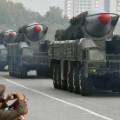

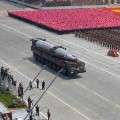
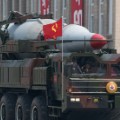
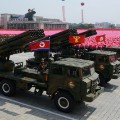

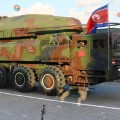
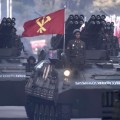
North
Korea's submarine fleet is believed to encompass about 70 subs, though
the majority are quite old and likely cannot fire missiles.
When
taken together, these developments are concerning because North Korea
says it is trying to develop a missile capable of delivering a nuclear
warhead to the United States.
Pyongyang
has long maintained the ability to legitimately threaten the United
States with a nuclear attack is the only way to protect itself against
any US-led attempts at regime change.
Land-based
and submarine-based missiles are considered two-thirds of what is known
as the "Strategic Triad," a theory that a state must have land, air and
sea-based nuclear attack capabilities to successfully deter an enemy
from trying to attack it.
The current US intelligence assessment is that the missile program aboard submarines remains in the very early stages.
CNN
reported earlier this month that North Korea had sent a diesel-powered
Romeo Class sub on an unprecedented patrol and had been outfitting its
Gorae Sub with a possible missile launch demonstration tube.
Two
US defense officials told CNN at the time that the North Korean
Romeo-class submarine was engaged in "unusual deployment activity" in
the waters off the coast of Japan and was patrolling farther that it has
ever gone, sailing some 100 kilometers out to sea in international
waters.
The submarine's activity
was different than the typical training activity usually observed closer
to shore, according to the officials.
That activity caused US and South Korean forces to slightly raise their alert level, according to one official.
The
US military pays close attention to North Korean submarine activity
following the 2010 Cheonan incident where a North Korean sub torpedoed a
South Korean Naval vessel.
Last
summer, North Korea conducted what experts believed was its first
successful submarine missile test, firing a missile called the the KN-11
or Pukguksong-1.



















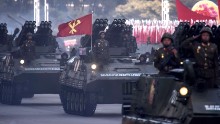
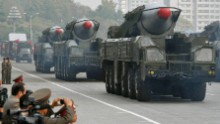




No comments:
Post a Comment